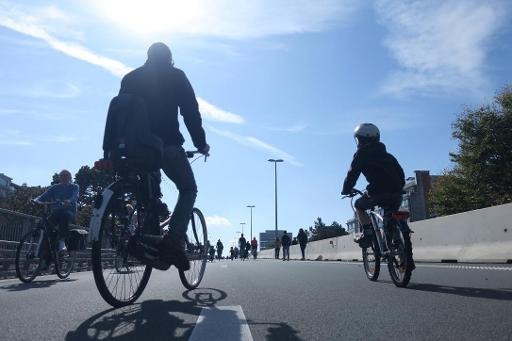The Brussels district of Anderlecht has approved a plan for its first car-free neighbourhood, which involves creating multiple new pedestrian squares in Cureghem (Kuregem) beginning this summer.
The Chaussée de Mons (Bergensesteenweg) – the most important through-road – will remain undisturbed for the time being, reports Bruzz.
The changes are part of Brussels’ regional mobility plan Good Move, which seeks to make all residential areas car-free by 2030. Every year, five more car-free neighbourhoods will be created.
Related News
- Two car-free zones planned for Jette and Ganshoren in Brussels
- How Car-free Sunday in Brussels compares to a normal day
Schaarbeek was the first to implement its plan to transform its heart into a car-free zone. Similarly, Anderlecht involved residents and mobility associations in this process. Through traffic will be kept out mainly by one-way traffic and traffic filters that block the passage of cars.
A principled plan
“The plan is based on four principles,” explained Mayor Fabrice Cumps (PS). “First of all, we want to protect the inhabitants from the adverse effects of through traffic.
“Additionally, all places in the municipality must remain accessible, both for residents and visitors. A third priority is that we want to make public transport run more smoothly. And finally, we want to redistribute public space.”
Mobility Alderman Susanne Müller-Hübsch (Green) pointed out that the concrete interventions will in many cases create new squares by eliminating car traffic, while leaving Chaussée de Mons (Bergensesteenweg) untouched.
“The Bergensesteenweg will be tackled at a later stage in the spirit of Good Move,” said Müller-Hübsch.
“We might need a major reconstruction there, which would immediately eat up the entire €4 million we're getting from the region. We'd rather spend that on the residential streets now. In the meantime, we are looking into whether we can get support from the region for a heavier intervention on Bergensesteenweg.”
Avoid disrupting commerce
Another reason to hold off on making changes to the Bergensesteenweg is the presence of many shops and storefronts along the route.
“The intersection is very important for the businesses located around it,” Müller-Hübsch said.
“This is not just any intersection in a residential area, but in a neighbourhood with a very busy economy. With business struggling because of the coronavirus crisis we don't want to make it even harder.”
Input from residents
The canal quays will also not be touched: car traffic will remain possible in both directions on the Quai d'Industrie (Nijverheidskaai).
A communication and information campaign will take place in the run-up to the summer, with residents given the opportunity to have their say on the provisional layout of the new public spaces.
“Every change causes some stress,” said Müller-Hübsch. “But with patience, a willingness to listen and the opportunities that this project offers for the youth in the district, this project is sure to be a success.”

